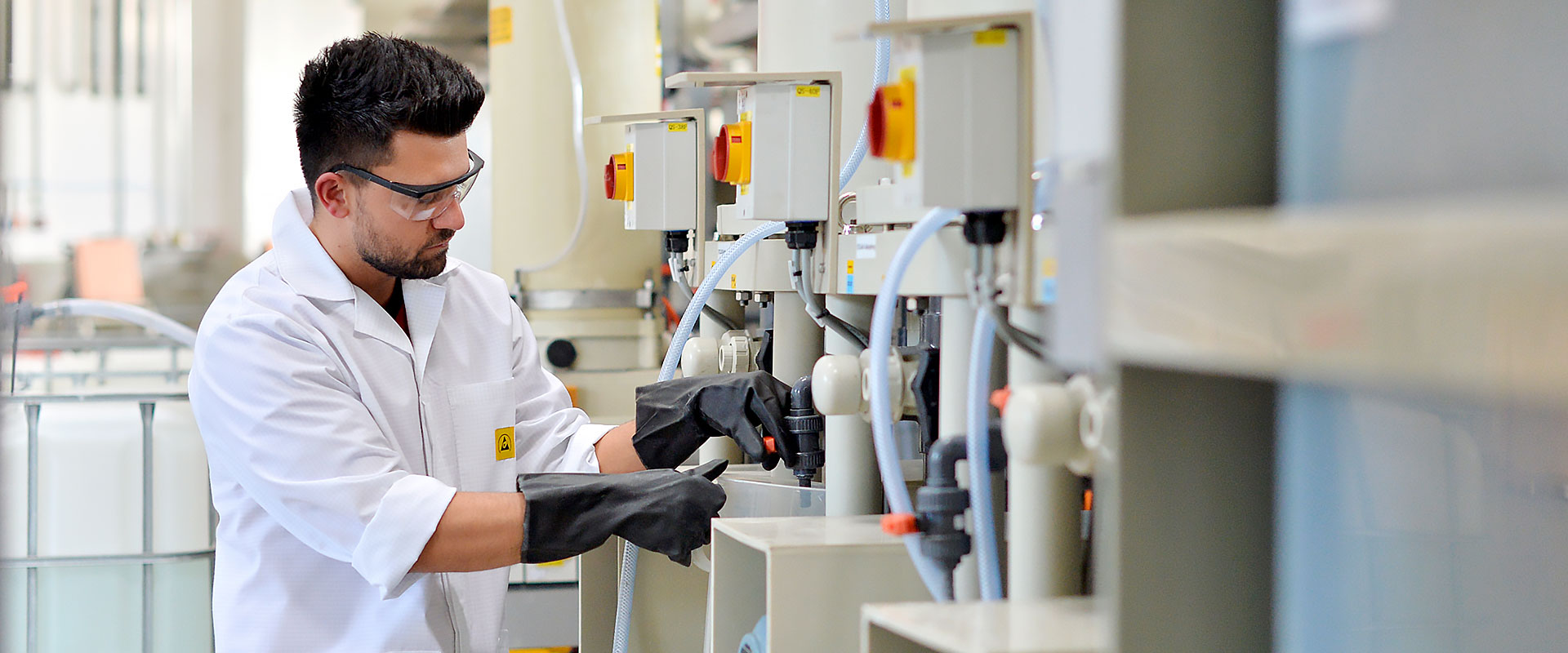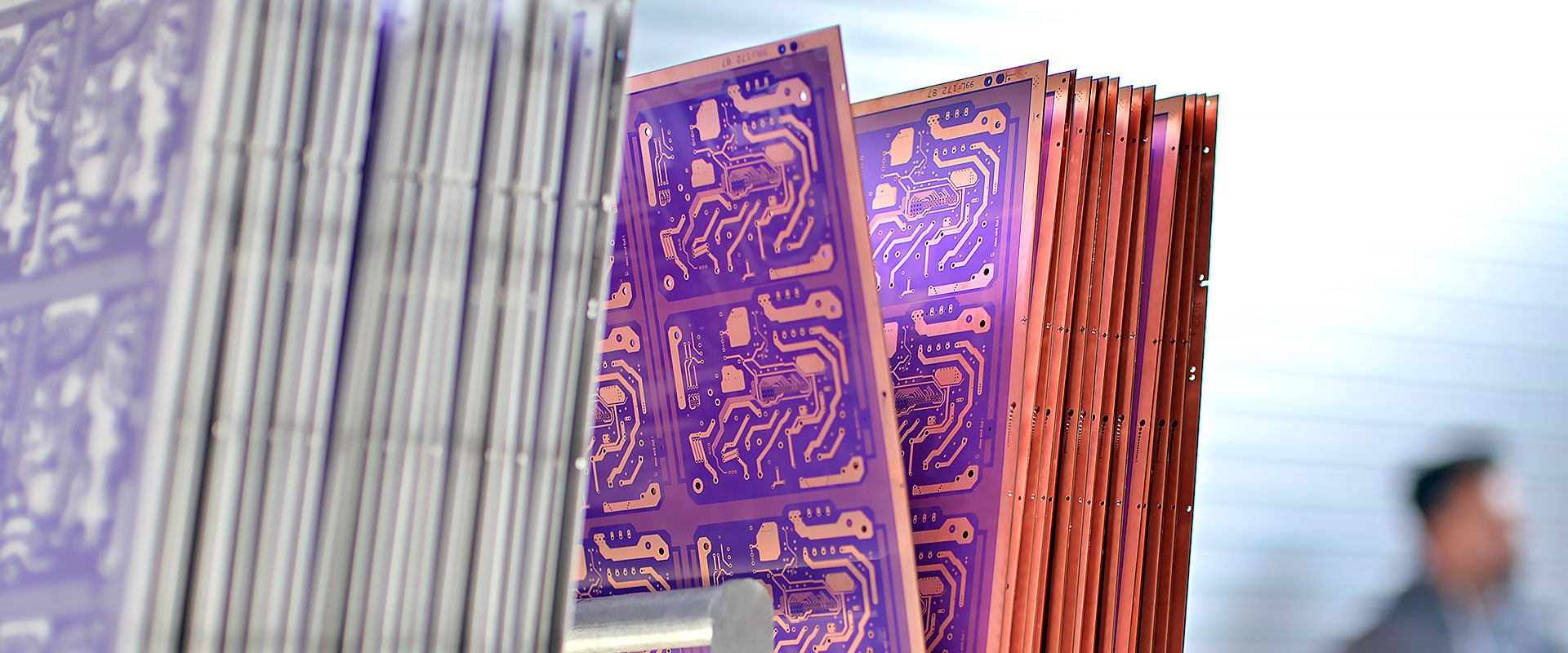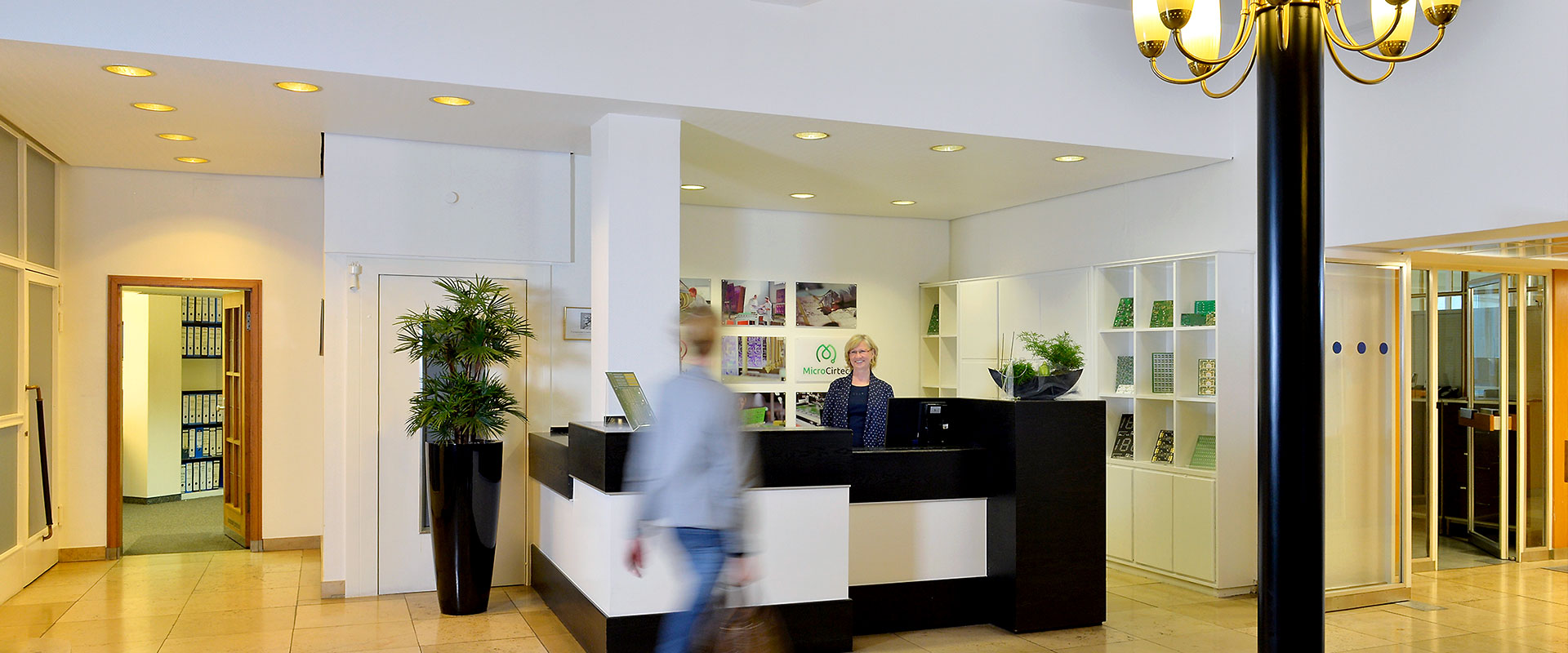Surfaces
We apply all types of finishing, such as:
- Hot Air Levelling Leadfree (HAL)
- Chemical Nickel Gold (NiPAu or ENIG)
- ENEPIG (Electroless Nickel Electroless Palladium Immersion Gold)
- Chemical Tin (Chem.Sn)
- Chemical Silver (Chem.Ag)
- Hard Gold Plating and OSP (Organic Surface Protection)
- Galvanic goldfinger plating
| Verfahren | HAL | chem. SN | chem. Silber | OSP | chem. Ni/Au | Hartgold |
|---|---|---|---|---|---|---|
| Metall/Legierung | Sn0, 7CU Sn0, 7Cu0, 1Ni Sn98, 2Ag0, 3Cu0, 7Ni0, 02 |
Zinn | Silber | Organic | 99,9Au | 99,5Au |
| Schichtstärke µ | <10 | <1 | 02,-0,4 | 0,02-0,06 | 0,05-0,12 Au /4-8 Ni |
0,8-5 Au |
| Planarität | befriedigend | sehr gut | sehr gut | sehr gut | sehr gut | sehr gut |
| Lagerfähigkeit bei stabilen Konditionen |
≤ 12 Monate | < 6 Monate | < 6 Monate | < 6 Monate | < 12 Monate | < 12 Monate |
| Mehrfachlötbarkeit | sehr gut | befriedigend | gut | bedingt | sehr gut | - |
| reaktivierbar | ja | ja | ja | ja | bedingt | bedingt |
| Al-Draht-Bonden | nein | nein | bedingt | nein | ja | - |
| Au-Draht-Bonden | nein | nein | nein | nein | nein | - |
| Drucktasten-Kontakt | nein | nein | nein | nein | ja | ja |
| Einpresstechnik | ja | ja | ja | nein | nein | nein |
Hot Air Levelling (HAL)
The term hot air levelling is used both for the production procedure as well as for the surface of circuit boards with 99.55% Sn (tin), 0.3% Ag (silver) and 0.15- 0.05% Ni (nickel). It protects the underlying copper drilling holes from oxidation.
The circuit boards are dipped into a hot melt (<260°C) of the above metals. The surfaces are then levelled with compressed hot air and the drilling holes blown free. The surface is very well suited for multi–soldering, and storage is possible for up to 12 months.
Radial mounting with one-sided SMD technique is both qualitatively and financially attractive using HAL. Our solder is lead-free and meets RoHS regulations.
Chemical Nickel Gold (ENIG = Electroless Nickel immersion Gold)
ENIG or chemical nickel gold is a metallic, easy to solder surface. It is deposited onto the copper layer of the soldered points at a strength of 4 – 9µ nickel and, ideally, 0.05 – 0.1µ gold which prevents oxidation of the copper. The electroless plating is deposited by means of catalytic processes, as well as the electrical potential difference (valency) of the metals utilised.
The surface is completely level, suitable for multi-soldering with SMD, Cob and HDI techniques, as well as aluminium wire bonding, and can be stored for up to 12 months.
The surface is IPC-4552 specified and meets the current RoHs and WEE requirements.
ENEPIG (Electroless nickel electroless palladium immersion gold)
The ENIG procedure adds an electroless layer of palladium (0.05 – 0.25µ thick) to the final surface between the nickel and gold processing steps.
This additional layer is not only excellent for all varieties of soldering, but is used predominantly for gold wire bonding. This method is seen as a very expensive special application.
Chemical tin
Chemical tin is a metallic, easy to solder final surface. A fine electroless layer of approx 0.7 – 1.2µ tin is deposited onto the copper soldering points where it prevents oxidation of the copper. The surface of the pad is very smooth and is therefore particularly suitable for SMD-CoB and HDI and moulding.
Storage should not exceed six months. Dampness and temperature changes during storage can impair the solderability.
Chemical Silver (chem. Ag.)
Chemical silver is a metallic, excellent for multi-soldering final surface with a layer measuring 0.2 – 0.4µ of electroless plating onto the solder points (similar to the chemical tin process). The surface is smooth and is well suited for SMD moulding.
Storage of up to six months is possible. Similarly to chemical tin, temperature changes and dampness cause surfaces to lose solderability. Surfaces should on no account have contact with sulphurous materials (e.g. certain types of packing paper).
OSP (Organic Surface Protection)
OSP is an organic solution that is selectively deposited onto solderable copper surfaces at a layer strength of 0.2 – 0.6µ by means of dipping or rinsing baths. The surface is smooth and well suited for a fine SMD mounting. Multiple solderings are not possible as the transparent layer disintegrates above 150°.
Storage is limited to 6 months maximum.
Galvanic goldfinger plating
In contrast to electroless gold (=ENIG procedure), nickel is also used as a copper diffusion barrier but the gold is deposited by anode-cathode electrolysis. Thus, significantly greater thickness layers of 1 - 4µ can be achieved as the deposition is not dependant on the different electric potential of nickel and gold. This “hard gold” is used for circuit boards with edge connectors with multiple plugs. The thicker the gold, the higher the number of mating cycles (e.g.: 0.4µ Au = 20 mating cycles, 2µ = 500 mating cycles).


